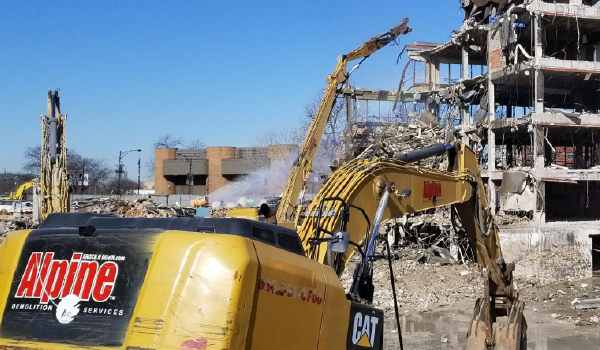The Ultimate Overview to Inside Demolition Techniques and Equipments
Within the world of interior restorations, the art of demolition is an essential phase that needs accuracy, ability, and the right set of tools. Whether you are a seasoned expert or a DIY fanatic, understanding the ins and outs of indoor demolition techniques can make all the difference in achieving an effective job result. As we navigate through the subtleties of this extensive overview, we will certainly discover essential devices, security actions, and expert methods that are vital when beginning on the journey of changing a space. Keep tuned to uncover the essential insights that can boost your demolition prowess to brand-new elevations.
Crucial Interior Demolition Tools
When undertaking indoor demolition projects, having the appropriate tools is important for efficiency and security. One of the most crucial tools for interior demolition is the demolition hammer. This sturdy tool is developed to appear tough products like ceramic tile, drywall, and concrete. Its powerful hammering action can promptly knock down walls, floorings, and various other frameworks. Furthermore, a lever is important for eliminating components, trim, and various other materials. Its utilize enables the very easy extraction of nails and various other fasteners without damaging the surrounding surface areas - interior demolition.
Its capability to make precise cuts in tight rooms makes it suitable for demolition work. Overall, having these essential interior demolition devices will dramatically improve the efficiency and safety of any demolition job.

Security Precautions Throughout Demolition

Furthermore, all workers entailed in the demolition procedure ought to receive appropriate training on the appropriate handling of devices and devices to reduce mishaps. By sticking to these safety and security preventative measures, interior demolition projects can be carried out effectively while prioritizing the health of all individuals entailed.
Strategies for Removing Walls
Carrying out proper safety and security precautions during indoor demolition tasks is crucial for developing a safe functioning setting, and one key element of such tasks entails understanding techniques for getting rid of wall surfaces. One commonly used technique is manual demolition, which requires making use of basic hand tools such as sledgehammers, crowbars, and energy knives to carefully take apart the wall surface piece by item. This method allows for better control over the demolition process, particularly in delicate locations where accuracy is vital.
For larger, much more complex wall surfaces, mechanical demolition might be necessary. This involves making use of heavy equipment like excavators or excavators to tear down wall surfaces effectively. Nevertheless, it is important to make sure that the architectural stability of the building is not compromised during mechanical demolition.
Another method for getting rid of wall surfaces is deconstruction, where the wall is disassembled in such a way that preserves recyclable products. This sustainable strategy is eco-friendly and can also help in reducing disposal prices. Whichever method is utilized, it is crucial to follow appropriate security protocols and consider the check my reference architectural effects of wall surface elimination to make sure an effective indoor demolition task.
Removing Flooring Like a Pro
Effectively eliminating floor covering during indoor demolition needs the correct devices and strategies to ensure a smooth and effective process. In addition, having a dumpster or designated disposal area all set for the gotten rid of flooring materials is critical for maintaining a tidy job environment. By adhering to these techniques and using the right devices, getting rid of flooring like a pro can be achieved successfully and successfully.
Correct Garbage Disposal Techniques
After effectively removing flooring using the ideal devices and strategies, the following important action in the indoor demolition procedure is applying proper waste disposal techniques. Appropriate garbage disposal is crucial for preserving a clean and safe work atmosphere throughout and after demolition. One of the main that site approaches for waste disposal is segregating materials into different categories such as recyclable, hazardous, and basic waste. This partition ensures that materials are disposed of properly and properly.

Service providers must follow neighborhood policies relating to waste disposal to prevent fines and charges. Making use of specialist waste administration services can streamline the disposal procedure and ensure compliance with environmental standards. By applying correct garbage disposal approaches, interior demolition jobs can be completed successfully and sustainably.
Final Thought
In verdict, indoor demolition calls for the use of crucial tools and rigorous safety preventative measures to guarantee a successful and safe procedure. Methods for getting rid of wall surfaces and flooring need to be done carefully and successfully to stay clear of any type of damage or mishaps. Appropriate garbage disposal approaches are likewise important to maintain a clean and well organized workplace. By adhering to these standards, interior demolition can be finished effectively and with marginal threats.
One of the most important devices for interior demolition is the demolition hammer (interior demolition). Generally, having these necessary interior demolition tools will significantly boost the effectiveness and safety and security of any kind of demolition job
Efficiently removing flooring throughout indoor demolition calls for the proper devices and methods to make certain a smooth and successful procedure.After successfully removing floor covering utilizing the suitable tools and techniques, the following crucial action in click this the interior demolition process is applying correct waste disposal methods.In verdict, interior demolition needs the usage of necessary tools and stringent safety precautions to guarantee a risk-free and successful procedure.